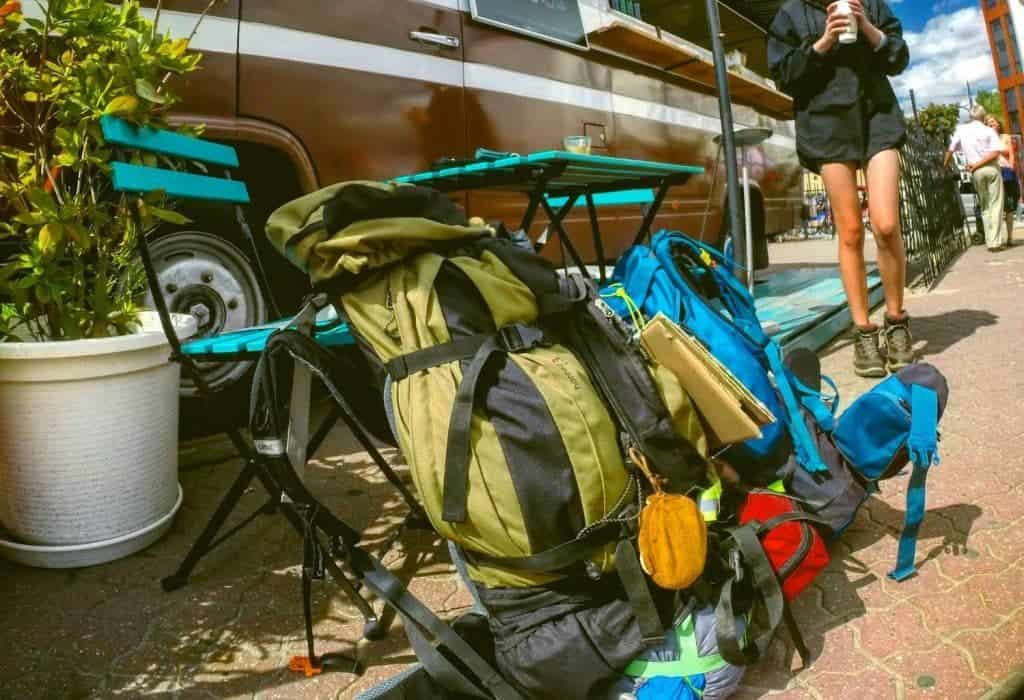When you head into the backcountry on your next hiking trip make sure you bring all the right hking gear. It doesn’t matter if you’re going on a one day trip or plan on staying in the wilderness for a week, the same basic rules are going to apply. With the following essential hiking gear you should be ready for anything the wilderness throws at you.
Essential Hiking Gear
The ten essentials to hiking and backpacking have been around for as long as I can remember. As a young boy scout, my troop leader introduced us to the book “Mountaineering: The Freedom of The Hills” which is the first reference to the ten essentials I’ve seen. It came out in the 70’s, but all of the essentials still hold true today(with a few minor updates).
What Do The 10 Essentials Accomplish?
The Ten essentials were designed to highlight the essential gear needed by every backcountry hiker. The list was designed to answer these two basic questions.
- Do you have all the right gear to respond to an emergency?
- Can you spend a night outside if necessary?
It shouldn’t matter if you’re going on a day hike, or going on a week long trip, you’ll need the same basic gear. Certain equipment deserves space in every hiking backpack. You probably won’t need every piece of gear on every trip, but this essential list should save you in a emergency.
What’s The Essential Backpacking Gear?
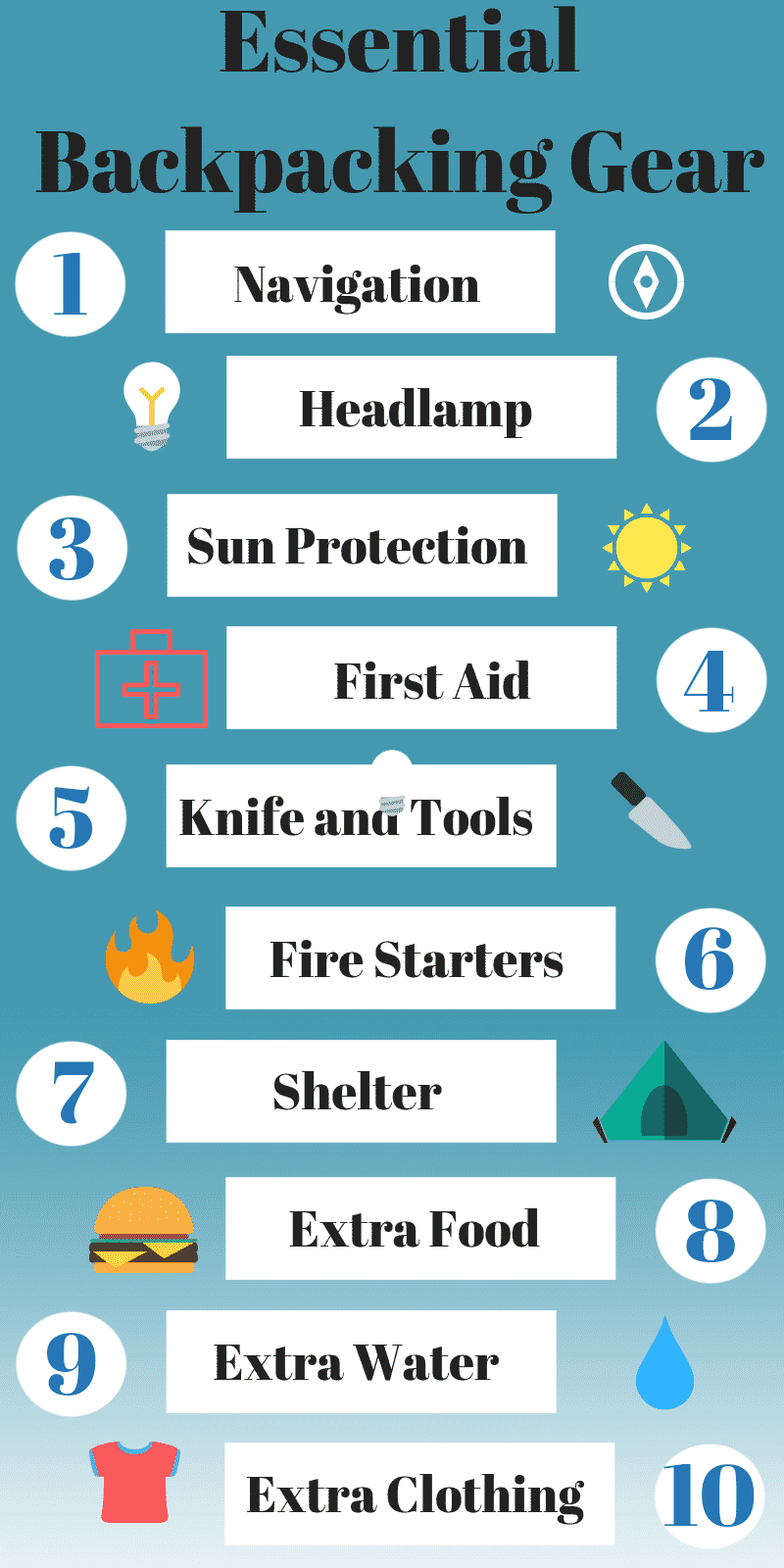
Throughout the years the ten essentials have slightly changed with modern technology. Instead of a list of items to bring the Mountaineers recommend focusing on a list of systems.
- Navigation: Maps, Compass, Altimeter, GPS(Cell Phone/Dedicated Unit), Extra Batteries
- Headlamp or Flashlight: Bring along a cheap headlamp like the Black Diamond Spot Headlamp
- Sun Protection: Sunscreen, Proper Clothing and Sunglasses
- First Aid: Basic First Aid Kit(Swiss Safe Kit), Blister Prevention, Insect Repellent
- Knife: Bring along one of my favorite survival knives. A fixed Blade Kabar is a good place to start.
- Fire: lighter, matches, camping stove
- Shelter: Carry some form of shelter at all times. At the very least bring along an emergency Bevy Kit.
- Extra Food: More food than you think you’ll need
- Extra Water: Bring extra water and a way to purify water. Water purification tablets are cheap and lightweight.
- Extra Clothes: Carry at least one extra change of clothes than you think you’ll need. You never know when your clothes will get wet.
1. Navigation
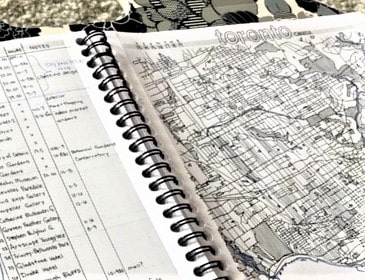
Navigating through the wild is going to require some serious navigation skills. You might be tempted to rely solely on GPS, but that’s a mistake. Instead combine old school navigation techniques with modern technology.
- Maps: It doesn’t matter if you have the most expensive GPS you can find, you also need to bring along a map. Unless you’re going out on a quick jaunt on a public footpath, you’re going to want a topographic map. Topographic maps with contour lines allow you to visualize three dimensional terrain from a flat piece of paper. On longer trips I also like to bring along a printout of the google maps satellite view for easier orientation.
- Compass: A compass is only as good as the person who uses it. You need to have basic orienteering skills and know how to read a map. Smartphones and GPS all have compasses included, but I would highly recommend bringing along a basic compass. You never know when your batteries are going to die, so bring along a basic UST topographic compass.
- GPS: Everyone has a GPS nowadays on their smartphone, but most hikers will prefer a rugged backpacking GPS. Units like the Garmin GPSMAP 64st offer rugged functionality and High sensitivity antennas. Most of the units will work almost anywhere on earth. With topographic maps you’ll be able to visualize the terrain around you. The main downside to relying on a electronic GPS is a short battery life(remember to bring along extra batteries on long trips).
- Altimeter: Mountaineers have long understood the importance of altitude, but most hikers completely ignore elevation. Altimeters are crucial when hiking through mountainous terrain. It doesn’t matter if it’s day or night a topographic map,compass and altimeter will give you a good bearing on your location. Most hiking GPS will give you an estimate of your altitude, or you can buy this cheap Casio watch. When climbing to extremely high altitudes keep an eye out for altitude sickness.
2. Headlamps and Flashlights
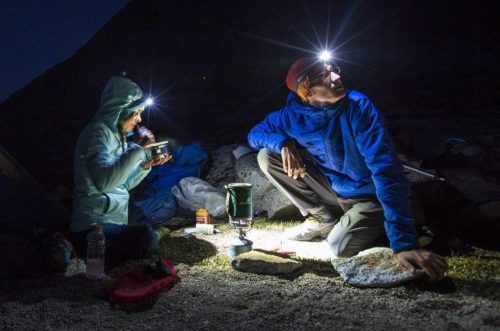
Most hikers and climbers are going to prefer a headlamp over a flashlight. Even with a cheap Black Diamond Headlamp your hands will be free allowing you to climb, cook and perform tasks that would be impossible with a flashlight.
It doesn’t matter if you plan on getting back before dark every hiker needs to bring along his own light source. You never know when you’re going to get delayed or injured forcing you to navigate in the dark.
On a recent trip to Seattle I sprained my ankle climbing Mount Si, turning a 4 hour hike into a late night excursion. Even though the trail was pretty basic I probably couldn’t have navigated it without my headlamp.
3. Sun Protection
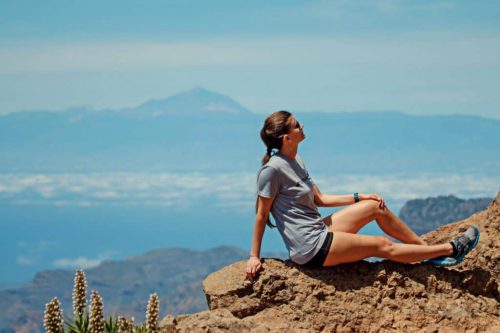
Nobody wants to be out on the trail with a wicked sunburn. Make sure you protect your skin with the proper clothing, sunscreen and sunglasses. Not preparing for the sun will result in sunburn and a miserable trip. Don’t forget to protect yourself during the winter. Snow blindness is a real thing.
- Sunscreen: I shouldn’t have to tell you why you need to bring along sunscreen. Your mother has probably been telling you to put on sunscreen your whole life. Unlike a trip to the pool most people don’t realize just how much sun you actually get while backpacking. Wearing sunscreen will reduce the amount of UV exposure you get. Sunsect sunscreen both protects your skin and wards off mosquitos on long hikes.
While hiking and climbing use a broad spectrum sunscreen that blocks out both Ultraviolet A and Ultraviolet B rays. UVB rays are known to cause sunburn whereas UVA rays lead to skin cancer.
- Sunglasses: On the trail sunglasses are absolutely critical. The eyes are really susceptible to the sun and burn easily. Don’t let cloudy conditions fool you, your eyes can easily burn resulting in painful snow blindness. Put on your sunglasses early and bring an extra pair, because they’ll eventually get damaged. I wear the same pair of polarized sunglasses that I do while fishing.
- Sun Protective Clothing: Clothing offers more sun protection than any sunscreen. During the summer try to find sweat wicking clothing that reduces moisture. Many backpackers find that the discomfort of a long sleeve lightweight shirt is less of a nuisance than constantly putting on sunscreen.
4. First Aid Kit
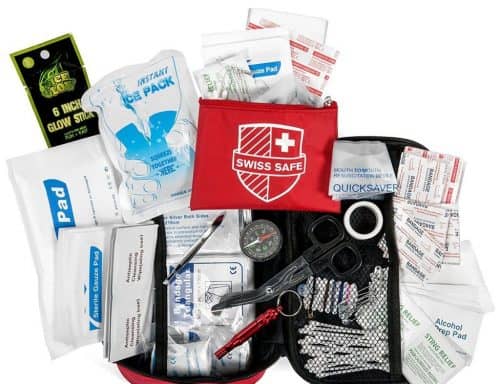
Before you go out into the field try and learn the basics of first aid. Learning how to deal with a snake bite or severe cut in the field are must have skills. Buying a preassembled first aid kit like these kits made by Swiss Safe take the guess work out of First Aid. Most kits have everything you need to handle basic injuries you might experience in the field.
Your kit should include treatments for blister prevention, oversized bandages, disinfecting ointments, adhesive tape, basic pain medication and sterile gloves. I always throw in a tube of hikegoo to prevent blisters and chafing.
5. Knife
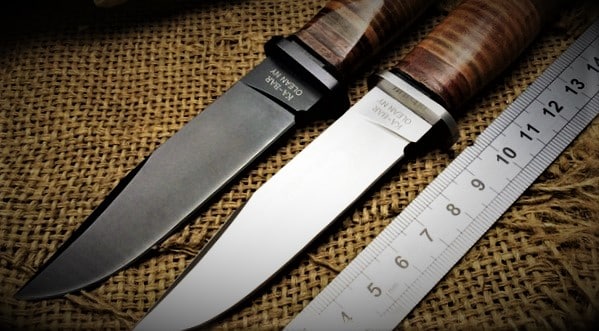
Knives are a backpackers best friend out in the wilderness. Knives are crucial for gear repair, food preparation, handling emergencies etc.. It should be no surprise that every adult out in the wilderness needs to carry a knife.
Personally I like to carry my Brothers of Bushcraft survival knife. I prefer a plain edge fixed blade knife that’s sturdy and can be used for just about everything. You can learn about different styles of survival knives here.
Other outdoorsman prefer a multi-tool that has a bunch of little tools inside. Plyers, screwdrivers, can openers and little tiny scissors that can aid you on a trip. There is a place for a multitool (I carry a Leatherman Wingman Multitool) in my pack, but honestly I rarely use it over my regular knife. As the complexity of your needs increase the more a multitool will actually help you. You might also want to carry around a small ziplock bag size Coleman Tent repair kit as well.
6. Fire

Even if you’re only planning on a short day hike bring supplies to make a fire. In case of an emergency you need to have a disposable lighter or even matches if kept in a waterproof container. Just leave those cheap gas station matches at home, because they’re to poorly constructed for wilderness use.
On longer trips you might want to bring along some firestarters to make building a fire easier. Wet wood is going to be very difficult to light without a firestarter. You can buy commercial firestarter Lightning Nuggets or make your own by soaking cotton balls in petroleum jelly.
On high altitude trips you aren’t going to have easy access to firewood. In these instances you’re going to have to bring along a small stove for emergency heat and water.
7. Emergency Shelter
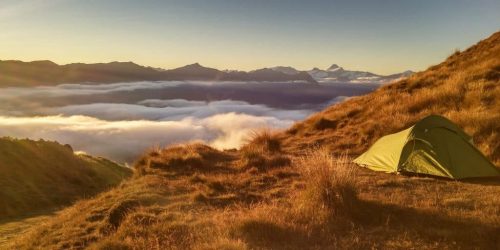
On longer trips you’re probably going to have a tent so you won’t have to worry about emergency shelters. You need to always carry a type of emergency shelter to protect yourself if you run into danger in the woods.
You could get lost in the woods or even worse get injured and need to spend a night on the trail. Personally I have a small emergency bevy kit, but you can also bring an ultralight tarp, emergency space blanket or even a large garbage bag.
Just remember that a tent is only good if you’re carrying it. A tent left back at camp is going to do you no good if you break your leg or get lost. A small bivy sack weighs less than 1 pound and will insulate you from the weather.
8. Extra Food
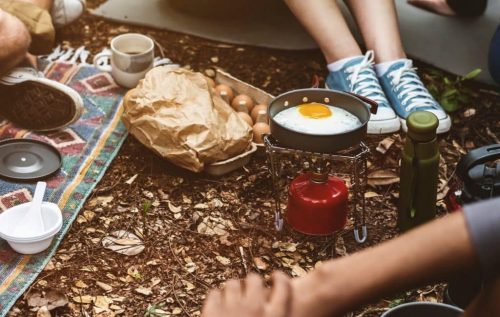
On shorter day trips bring an extra one day supply of food. Carrying additional food is going to be heavy so you need to keep your emergency stockpile reasonable. You never know when foul weather, bad navigation or an injury will delay a backpacking party.
On longer trips you may need to bring a little more food to provide a slight margin of error. Cold weather is also going to require additional supplies Food=Warmth. Check out my list of all the best camping cookware sets.
Your food should require little or no cooking and be easy to digest. Skip anything that requires a lot of water or has the possibility of causing stomach issues. I like to bring along a combination of jerky, nuts, granola bars and dried soups. Don’t forget your coffee and tea for a quick caffeine fix.
9. Extra Water
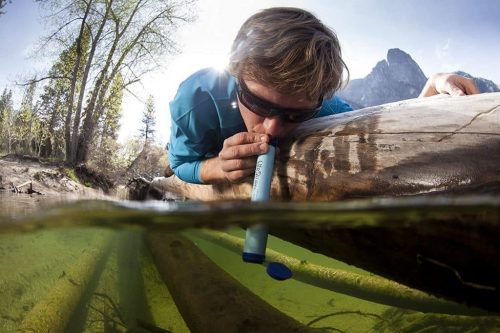
Lugging around water while backpacking is a difficult proposition. Water is extremely heavy and it’s impossible to carry all you need for a multi day hike. You might be able to carry enough water for a day hike, but for extra days you’ll need t find some method to treat the water. (Check out my guide on water purification methods)
The rule of thumb is that you should go out in the field with a half liter of water per hour. On short day hikes a small water bottle will probably be fine, but longer trips will require a water hydration bladder. CamelBak Hydration Reservoirs are the most popular, but I actually prefer a 3-Liter Platypus Reservoir.
Every time I go out in the field I bring some way to purify water. I always have a small container of water purification tablets in my bag. They weigh almost nothing and only cost a few bucks. The only downside is that it takes about 35 minutes to fully purify your water.
If you’re going on a longer trip with multiple people you should bring along a water filter. Big groups are going to need a gravity water filter, whereas a single hiker might be fine with a lifestraw.
10. Extra Clothes
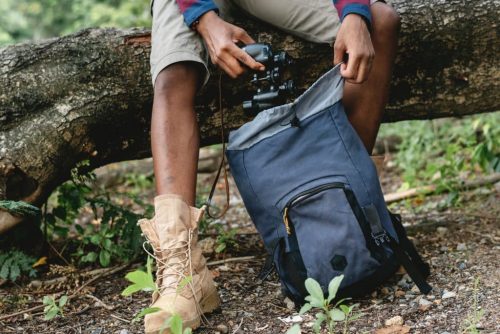
Conditions quickly change out in the woods so you need to bring clothes to handle every situation. Make sure you check the weather before going backpacking and pack accordingly. Always bring at least one extra set of clothes just in case. Normally I’ll bring a few extra pairs of socks, because wet feet will quickly get you miserable.
Just try to remember all the extra clothes you need to provide additional layers. What extra clothes will you need to survive all night in a emergency shelter? During the summer you might be fine with a light sweatshirt, but the winter you’ll need to really come prepared. Even if it’s in the 70’s during the day a pair of long underwear could be huge when the nighttime brings colder air.

